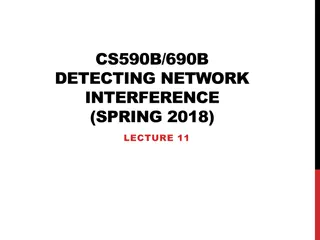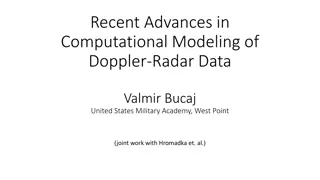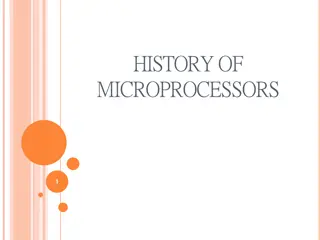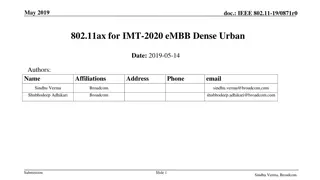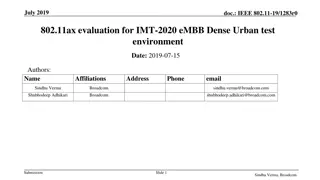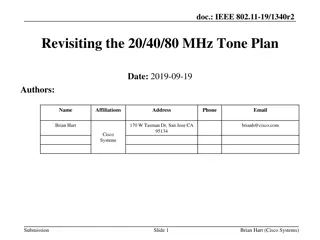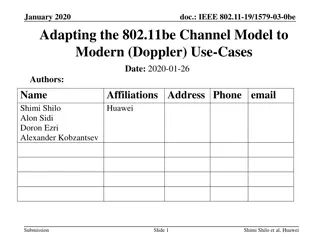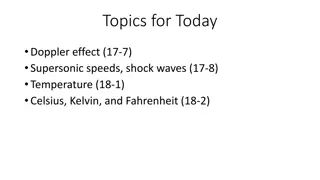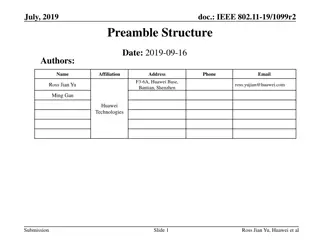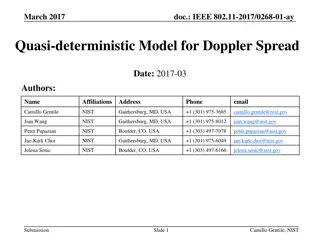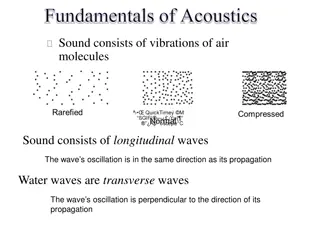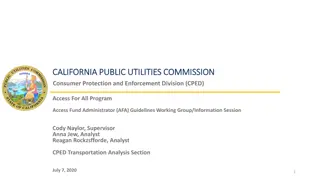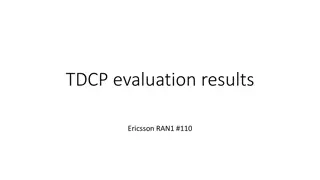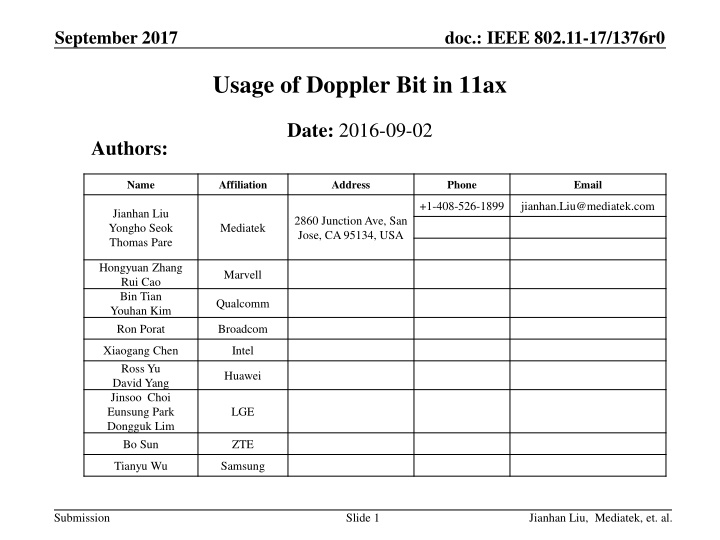
Usage of Doppler Bit in IEEE 802.11-17/1376r0 Document
Explore the usage of Doppler Bit in IEEE 802.11-17/1376r0 document for time-varying channels, mid-amble tracking, and advantages in link adaptation for short packets.
Download Presentation

Please find below an Image/Link to download the presentation.
The content on the website is provided AS IS for your information and personal use only. It may not be sold, licensed, or shared on other websites without obtaining consent from the author. If you encounter any issues during the download, it is possible that the publisher has removed the file from their server.
You are allowed to download the files provided on this website for personal or commercial use, subject to the condition that they are used lawfully. All files are the property of their respective owners.
The content on the website is provided AS IS for your information and personal use only. It may not be sold, licensed, or shared on other websites without obtaining consent from the author.
E N D
Presentation Transcript
September 2017 doc.: IEEE 802.11-17/1376r0 Usage of Doppler Bit in 11ax Date: 2016-09-02 Authors: Name Affiliation Address Phone Email +1-408-526-1899 jianhan.Liu@mediatek.com Jianhan Liu Yongho Seok Thomas Pare 2860 Junction Ave, San Jose, CA 95134, USA Mediatek Hongyuan Zhang Rui Cao Bin Tian Youhan Kim Ron Porat Marvell Qualcomm Broadcom Xiaogang Chen Ross Yu David Yang Jinsoo Choi Eunsung Park Dongguk Lim Bo Sun Intel Huawei LGE ZTE Tianyu Wu Samsung Submission Slide 1 Jianhan Liu, Mediatek, et. al.
September 2017 doc.: IEEE 802.11-17/1376r0 Time-varying Channels and Mid-amble Channel variation is one important feature of channel condition and should be feedback to assist the transmitter for following transmissions. Mid-amble is adopted in 11ax to combat time-varying channel conditions by enabling channel tracking [1-2]. Mid-amble is used to re-estimate or tracking the time-varying channel Mid-amble appears after a fixed duration, for example, a fixed number of symbols. This fixed duration is named as the mid-amble duration, say M symbols. Submission Slide 2 Jianhan Liu, Mediatek, et al
September 2017 doc.: IEEE 802.11-17/1376r0 Dual use of Doppler bit When packet length is larger than the mid-amble duration, Doppler bit is used to indicate if there exist mid-ambles in the packet. The receiver can detect time-variation of channels based on the received packet and mid-ambles. Note a transmitter can transmit a packet with mid-amble without knowing the channel condition just like use of different GIs. When packet length is not larger than the mid-amble duration, then Doppler bit is used as an indication if channel is time varying. (The packet can not contain any mid-amble anyway.) Note in this scenario the receiver is not able to detect time-variation of channels since the received packet is short. In this scenario, it is important for the receiver to get the information of time- varying channel to help its following transmissions. For example, an AP received a PS-poll from a STA, knowing if the channel is time- varying can help AP to configure the following transmissions to the STA. Submission Slide 3 Jianhan Liu, Mediatek, et. al.
September 2017 doc.: IEEE 802.11-17/1376r0 Advantages of Using Doppler Bit as an Indication for Short Packets Problems of link adaptation under Doppler condition: HE link adaptation information is carried in HE Variant HT Control field . However, HE Variant HT Control field are not included in all control frames, such as PS-poll, ACK, and BA. Control frames are short packets therefore those control frames can not be used to estimate Doppler condition of the channel. Also, time-varying channel is timely information, unsolicited feedbacks are not prompt. For AMPDU transmission, the immediate BA feedback is very useful for link adaptation for re-transmission when channel are time-varying. Using Doppler bit in HE-SIGA as Doppler indication is a perfect solution for short packets (such as control frames). The Doppler bit is wasted otherwise because the packet does not contain any midable no matter Doppler bit is set to 0 or 1 . The indication is prompt since it is in HE-SIGA: especially for those control frames using HE format. Submission Slide 4 Jianhan Liu, Mediatek, et. al.
September 2017 doc.: IEEE 802.11-17/1376r0 Straw poll #1 Do you agree the dual use of Doppler bit as followings? In an HE SU PPDU, HE ER SU PPDU, or HE MU PPDU, if the Doppler field of HE-SIG-A field is set to 1 and NSYM NMA +1, there is no Midamble present in the current PPDU. In this case, the Doppler field setting to 1 indicates that the current channel between the transmitter and the recipient is with high channel Doppler, and midamble is recommended for the PPDUs of the reverse link. Submission Slide 5 Jianhan Liu, Mediatek, et. al.
September 2017 doc.: IEEE 802.11-17/1376r0 References [1] 802.11AX Midamble Design for Doppler , IEEE 802.11-17/0734r1, Hongyuan Zhang, etc. [2] Thoughts on Doppler Design in 802.11ax , IEEE 802.11-17/0773r2, Lochan Verma, etc. Submission Slide 6 Jianhan Liu, Mediatek, et. al.




